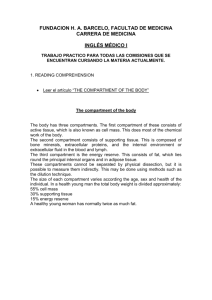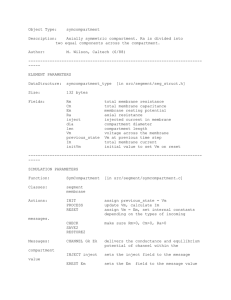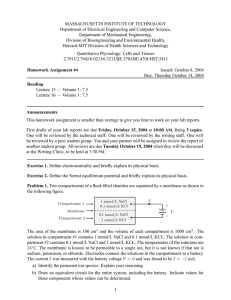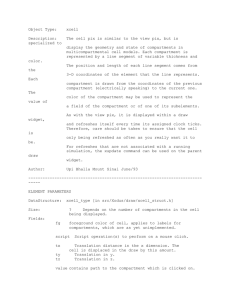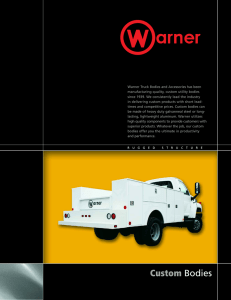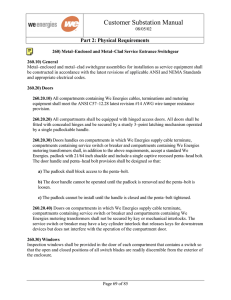Object Calendar Tips for Home or School
advertisement
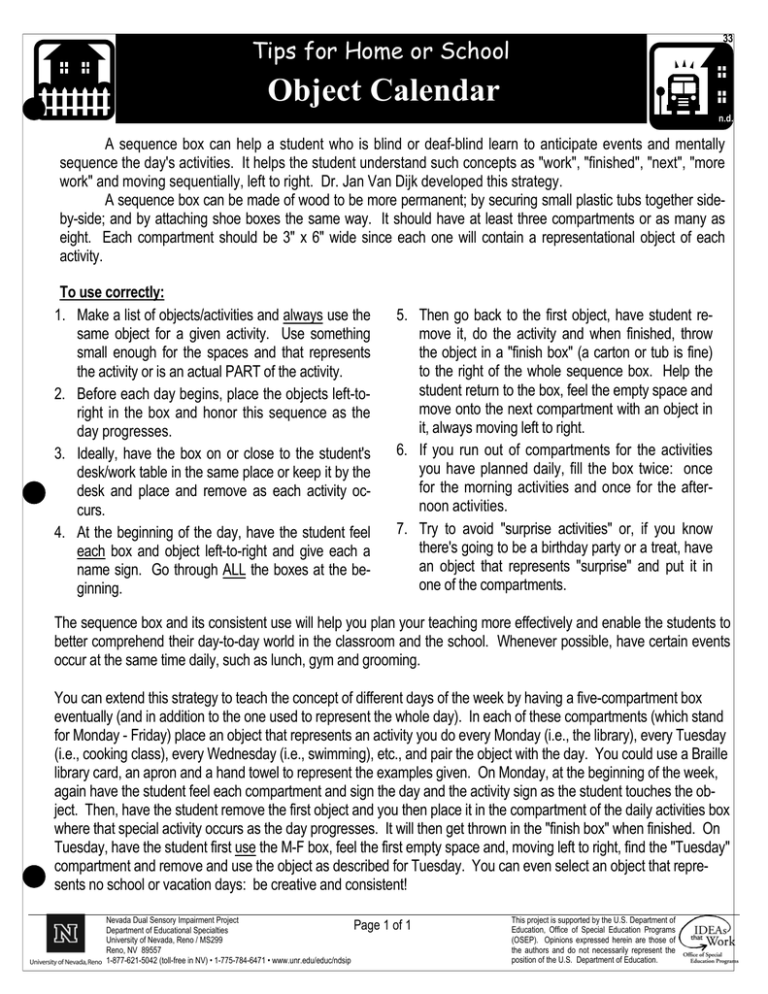
33 Tips for Home or School Object Calendar n.d. A sequence box can help a student who is blind or deaf-blind learn to anticipate events and mentally sequence the day's activities. It helps the student understand such concepts as "work", "finished", "next", "more work" and moving sequentially, left to right. Dr. Jan Van Dijk developed this strategy. A sequence box can be made of wood to be more permanent; by securing small plastic tubs together sideby-side; and by attaching shoe boxes the same way. It should have at least three compartments or as many as eight. Each compartment should be 3" x 6" wide since each one will contain a representational object of each activity. To use correctly: 1. Make a list of objects/activities and always use the same object for a given activity. Use something small enough for the spaces and that represents the activity or is an actual PART of the activity. 2. Before each day begins, place the objects left-toright in the box and honor this sequence as the day progresses. 3. Ideally, have the box on or close to the student's desk/work table in the same place or keep it by the desk and place and remove as each activity occurs. 4. At the beginning of the day, have the student feel each box and object left-to-right and give each a name sign. Go through ALL the boxes at the beginning. 5. Then go back to the first object, have student remove it, do the activity and when finished, throw the object in a "finish box" (a carton or tub is fine) to the right of the whole sequence box. Help the student return to the box, feel the empty space and move onto the next compartment with an object in it, always moving left to right. 6. If you run out of compartments for the activities you have planned daily, fill the box twice: once for the morning activities and once for the afternoon activities. 7. Try to avoid "surprise activities" or, if you know there's going to be a birthday party or a treat, have an object that represents "surprise" and put it in one of the compartments. The sequence box and its consistent use will help you plan your teaching more effectively and enable the students to better comprehend their day-to-day world in the classroom and the school. Whenever possible, have certain events occur at the same time daily, such as lunch, gym and grooming. You can extend this strategy to teach the concept of different days of the week by having a five-compartment box eventually (and in addition to the one used to represent the whole day). In each of these compartments (which stand for Monday - Friday) place an object that represents an activity you do every Monday (i.e., the library), every Tuesday (i.e., cooking class), every Wednesday (i.e., swimming), etc., and pair the object with the day. You could use a Braille library card, an apron and a hand towel to represent the examples given. On Monday, at the beginning of the week, again have the student feel each compartment and sign the day and the activity sign as the student touches the object. Then, have the student remove the first object and you then place it in the compartment of the daily activities box where that special activity occurs as the day progresses. It will then get thrown in the "finish box" when finished. On Tuesday, have the student first use the M-F box, feel the first empty space and, moving left to right, find the "Tuesday" compartment and remove and use the object as described for Tuesday. You can even select an object that represents no school or vacation days: be creative and consistent! Nevada Dual Sensory Impairment Project Department of Educational Specialties University of Nevada, Reno / MS299 Reno, NV 89557 1-877-621-5042 (toll-free in NV) • 1-775-784-6471 • www.unr.edu/educ/ndsip Page 1 of 1 This project is supported by the U.S. Department of Education, Office of Special Education Programs (OSEP). Opinions expressed herein are those of the authors and do not necessarily represent the position of the U.S. Department of Education.
